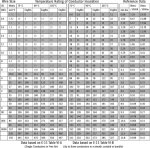DaveInDenver
Middle Income Semi-Redneck
Anderson SB175 using a 1/0 AWG terminal is rated to 280 amps in a wire-to-wire connection per UL. The CSA rating is 175 amp rating, as is the UL for a 3-pole configuration.So why does Warn sell these?
So no bueno?

Quick Connect Power Cable, 24' - 32966
This 24" Quick Connect Winch Power Cable is used for rear mounting of portable winch and connects to battery and includes power interrupt kitwww.warn.com
These ratings are determined by duration and ambient temperature. Anderson has to assume an indefinite length of time in an ambient environment of 25°C with a maximum of 30°C temperature rise (per CSA) or 105°C absolute temperature (per UL).
So the connector, per UL, with 1/0 terminals can carry 280 amps as long as you'd like at 25°C. IOW, these connectors are rated the same as the cable itself. A 1/0 AWG 105°C cable is usually given an allowable current of 285 amps. Any other cable and terminal size would follow the same pattern of the SB175 and cable sharing the same ratings.
A winch in normal use can't draw 480 amps for very long without itself overheating (given by duty cycle) or flatting the battery so the cable and connectors aren't typically stressed. The engineer can then decide if the duration is sufficiently short that temperature rise won't be a problem with higher currents or that average current meets the requirements.






